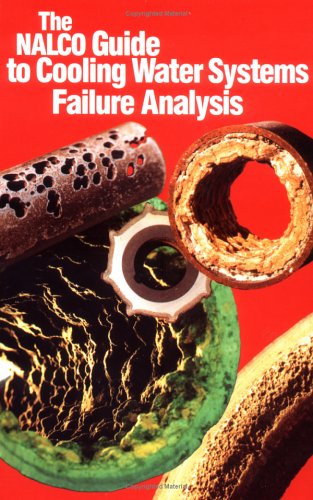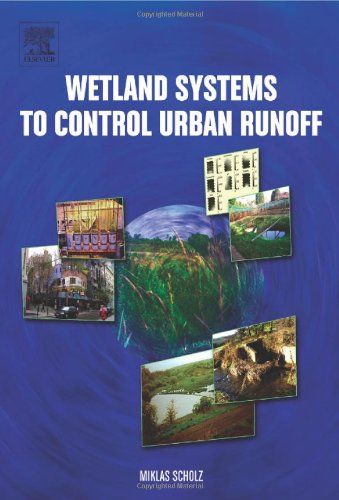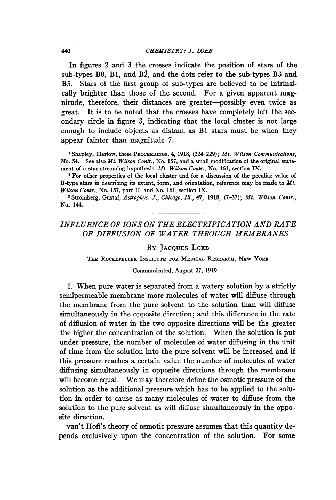American Water Works Association, American Society of Civil Engineers9780071418720, 0071418725
The industry standard reference for water treatment plant design and modernization has been updated to include hot topics such as security and design, vulnerability assessments, and planning against vandalism and sabotage, as well as the latest information on codes, regulations, and water quality standards.
Table of contents :
Front Matter……Page 1
Contributors……Page 3
Preface……Page 5
Table of Contents……Page 0
Table of Contents……Page 7
1. The Challenge of Water Treatment Plant Design……Page 13
1.1 Today’s Challenges……Page 14
1.2 Development of Water Treatment Design Projects……Page 16
1.3 The Purpose of This Text……Page 17
1.4 Bibliography……Page 18
2.1 The Master Plan……Page 19
2.2 Water Quality Goals……Page 22
2.3 Treatment Options……Page 27
3.1 Preliminary Design……Page 34
3.2 Final Design……Page 38
3.3 Construction Assistance……Page 43
3.4 Bibliography……Page 45
4.1 Intake Features……Page 46
4.2 Types of Intake Systems……Page 48
4.3 Intake Design……Page 60
4.4 Intake Design Considerations……Page 66
4.5 Racks and Screens……Page 76
4.6 Bibliography……Page 79
5.1 Uses of Aeration/Air Stripping……Page 81
5.2 Types of Aeration/Air Stripping Equipment……Page 82
5.3 Principles of Air Stripping and Aeration……Page 88
5.4 Design of Aeration/Air Stripping Processes……Page 90
5.5 Pilot Testing……Page 102
5.6 Bibliography……Page 104
6.1 Definitions……Page 106
6.2 The Coagulation Process……Page 107
6.3 Coagulation and Membrane Technology……Page 110
6.4 Design of Chemical Mixing……Page 111
6.5 Flocculation Process Design……Page 119
6.6 Process Monitoring and Control……Page 128
6.7 Bibliography……Page 130
7.1 Conventional Clarification Design……Page 131
7.2 High-Rate Clarification……Page 152
7.3 Solids Contact/Slurry Recirculation Units……Page 158
7.4 Sludge Blanket Clarification……Page 162
7.5 Dissolved Air Flotation……Page 166
7.6 Contact Clarification……Page 170
7.7 Bibliography……Page 173
8. High-Rate Granular Media Filtration……Page 175
8.2 Design Considerations……Page 176
8.3 Filter Design Criteria……Page 210
8.4 Filter Operation and Maintenance……Page 211
8.5 Bibliography……Page 215
9. Slow Sand and Diatomaceous Earth Filtration……Page 218
9.1 Slow Sand Filtration……Page 219
9.2 Diatomaceous Earth Filtration……Page 233
9.3 Bibliography……Page 246
10. Oxidation and Disinfection……Page 248
10.1 Regulatory Framework……Page 249
10.2 Chemical Oxidation Treatment……Page 257
10.3 Chlorination……Page 260
10.4 Chlorine Dioxide Systems……Page 281
10.5 Ozone Disinfection Systems……Page 286
10.6 Bibliography……Page 306
11.1 Water Hardness and Softening Treatment……Page 309
11.2 Pretreatment……Page 313
11.3 Lime Softening Processes……Page 314
11.4 Softening Process Basins……Page 321
11.5 Special Lime Softening Design Considerations……Page 324
11.7 Bibliography……Page 327
12.1 Introduction……Page 329
12.2 The Ion Exchange Process……Page 334
12.3 Cation Exchange Process……Page 337
12.4 Anion Exchange Processes……Page 340
12.5 Demineralization……Page 358
12.6 Basics of Equipment Design……Page 360
12.7 Regeneration Methods……Page 361
12.8 Boundaries Between Suppliers, Consultants, and Users……Page 381
12.10 Bibliography……Page 382
13.1 Types of Membrane Processes……Page 390
13.2 Membrane System Components and Design Considerations……Page 397
13.3 Membrane Unit Design……Page 414
13.4 Other Membrane Process Design Considerations……Page 430
13.5 Bibliography……Page 437
14.1 Characteristics of Activated Carbon……Page 439
14.2 Design of Powdered Activated Carbon Facilities……Page 442
14.3 Design of Granular Activated Carbon Facilities……Page 447
14.4 Regeneration of Granular Activated Carbon……Page 471
14.5 Bibliography……Page 475
15.1 Receiving and Storing Process Chemicals……Page 477
15.2 Chemical Feed and Metering Systems……Page 493
15.3 Designing for Safety and Hazardous Conditions……Page 517
15.4 Recent Trends in Chemical Handling and Use……Page 526
15.5 Bibliography……Page 529
16.1 Hydraulic Design……Page 530
16.2 Head Loss Types and Calculations……Page 534
16.3 Hydraulic Design Hints……Page 540
16.4 Ancillary Hydraulic Design……Page 542
16.5 Bibliography……Page 544
17. Process Residuals……Page 545
17.1 Sludge Types, Quantities, and Characteristics……Page 548
17.2 Process Residual Disposal Methods……Page 553
17.3 Residuals Disposal Regulatory Requirements……Page 556
17.4 Design Considerations and Criteria……Page 560
17.5 Residuals Handling Considerations……Page 602
17.6 Additional Information Sources……Page 611
17.8 Bibliography……Page 612
18.1 The Role of the Architect in Water Treatment Plant Design……Page 615
18.2 Facilities Design……Page 619
18.3 Construction Alternatives and Building Material Selection……Page 628
18.4 Design Standard-Promulgating Organizations and Organizations Offering Design Recommendations……Page 631
19.1 The Design Process……Page 634
19.2 Structural Design Considerations……Page 635
19.3 Design of Basins, Vaults, Large Conduits, and Channels……Page 643
19.4 Buildings and Superstructures……Page 645
19.5 Bibliography……Page 646
20. Process Instrumentation and Controls……Page 647
20.1 Process and Operational Control Strategies……Page 648
20.2 Control System Design……Page 661
20.3 Instrumentation……Page 676
20.4 Bibliography……Page 688
21.2 Codes and Standards……Page 689
21.3 Electrical Distribution Systems……Page 691
21.4 Transformers……Page 692
21.5 Motors and Controllers……Page 693
21.6 Lighting……Page 696
21.7 Lightning Protection……Page 697
21.9 Acceptance Testing……Page 698
21.10 Maintenance……Page 699
22.2 Reliability and Redundancy Concepts……Page 701
22.3 Overall Water Supply System Reliability……Page 703
22.4 Design Concepts……Page 705
22.5 Design Principles and Practices……Page 708
22.6 Operation and Maintenance……Page 714
22.7 References……Page 715
23.1 Water Treatment Plant Site Selection……Page 717
23.2 Arrangement of Water Treatment Plant Facilities……Page 738
23.3 Bibliography……Page 752
24.1 Environmental Issues Associated with Plant Construction……Page 754
24.2 Environmental Issues Associated with Plant Operations……Page 758
24.3 Project Permitting……Page 765
24.4 Integration of Environmental Issues and Regulatory Compliance into Plant Design, Construction, and Operation……Page 769
24.5 Bibliography……Page 771
25.1 Design Considerations for Plant Operations and Maintenance……Page 772
25.2 Preparing a Plant for Start-Up……Page 789
26.1 Introduction……Page 795
26.2 Level of Estimates……Page 796
26.3 Estimating Methodologies……Page 798
26.4 Special Cost Considerations……Page 800
26.5 Finalizing the Cost Estimate……Page 802
26.6 Bibliography……Page 804
27.1 Training and Start-Up Considerations……Page 805
27.2 Design-Phase Training……Page 806
27.3 Construction-Phase Training, Start-Up, and Post-Start-Up……Page 809
28. Pilot Plant Design and Construction……Page 819
28.1 Pilot Plant Studies……Page 820
28.2 Pilot Plant Design……Page 821
28.3 Pilot Plant Construction……Page 839
28.4 Bibliography……Page 843
29. Ultraviolet Disinfection……Page 844
29.1 Principles of UV Disinfection……Page 845
29.2 Applications for UV Disinfection……Page 849
29.3 UV Disinfection Equipment……Page 851
29.4 Water Quality and Treatment Effects on UV Disinfection……Page 858
29.5 UV Disinfection Facility Planning, Design, and Project Implementation……Page 862
29.6 Construction, Testing, Start-Up, and O&M……Page 878
29.7 Potential Regulatory Requirements for UV Disinfection in North America……Page 881
29.8 Validation Testing……Page 886
29.9 Bibliography……Page 888
30. Water Treatment Plant Security……Page 891
30.2 Barriers……Page 892
30.3 Electronic Security Systems……Page 893
30.4 CCTV……Page 895
30.5 Procedures……Page 896
30.6 Bibliography……Page 897
Appendix A. Properties and Characteristics of Water Treatment Chemicals……Page 898
Appendix B. Abbreviations Commonly Used in the Water Industry……Page 929
A……Page 940
C……Page 942
D……Page 947
E……Page 949
F……Page 950
G……Page 952
H……Page 953
I……Page 954
L……Page 955
M……Page 956
N……Page 957
O……Page 958
P……Page 959
R……Page 962
S……Page 964
T……Page 968
U……Page 969
V……Page 970
Z……Page 971







Reviews
There are no reviews yet.